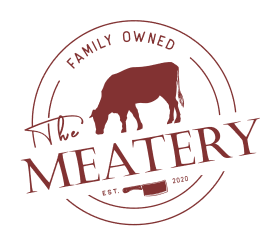Wagyu beef, literally meaning "Japanese cow" (wa = Japanese, gyu = cow), represents one of the most prestigious and sought-after meats in the world. The origin of Wagyu cattle dates back to the 2nd century when cattle were first introduced to Japan as draft animals for agriculture, particularly in rice cultivation.
These cattle developed unique genetic characteristics over centuries of isolated breeding in Japan. The geographic isolation of Japan, combined with strict breeding protocols, resulted in distinctive genetic strains that produce beef with exceptional marbling characteristics. Four primary breeds make up Wagyu cattle: Japanese Black (Kuroge), Japanese Brown (Akage), Japanese Shorthorn (Nihon Tankaku), and Japanese Polled (Mukaku).
The Japanese Black, accounting for about 90% of all Wagyu cattle raised in Japan, is particularly renowned for producing meat with intense marbling. This intramuscular fat, known as shimofuri in Japanese, creates the characteristic snowflake-like pattern in the meat and contributes to its legendary taste and texture.
Historically, meat consumption was largely prohibited in Japan until the Meiji Restoration in 1868. After this period, the Japanese government actively encouraged beef consumption and began improving cattle breeding programs. The systematic breeding of Wagyu cattle for meat production truly began in the early 20th century, leading to the development of the superior genetics we see today.
How Old Are Wagyu Cows When Slaughtered?
Wagyu cattle follow a distinctly different lifecycle compared to conventional beef cattle. While typical beef cattle are usually slaughtered at 12-22 months of age, Wagyu cattle are raised for a significantly longer period, typically between 28-30 months, with some producers extending this to 36 months or more.
This extended lifespan serves several crucial purposes in developing the characteristic qualities of Wagyu beef:
- Fat Development: The longer raising period allows for optimal intramuscular fat development, creating the signature marbling
- Flavor Enhancement: Extended aging contributes to more complex flavor profiles
- Meat Texture: Slower growth promotes better muscle development and meat tenderness
The careful aging process involves specific feeding regimens at different life stages. Calves typically spend their first 7-10 months nursing and grazing, followed by a carefully controlled diet of high-quality grains, grasses, and specialized feed supplements. This methodical approach to aging and feeding contributes significantly to the final quality of the meat.
What's the Difference Between Wagyu and Normal Beef?
The distinctions between Wagyu and conventional beef extend far beyond simple pricing. The fundamental differences lie in several key areas:
- Genetic Composition: Wagyu cattle possess unique genetic markers that enable superior fat marbling
- Fat Distribution: Wagyu contains a higher percentage of intramuscular fat with unique characteristics
- Nutritional Profile: Higher concentrations of monounsaturated fats and omega-3 fatty acids
- Texture and Taste: Significantly more tender with a distinctive, rich flavor profile
The marbling in Wagyu beef contains a higher proportion of monounsaturated fats, particularly oleic acid, which contributes to its lower melting point and characteristic "melt-in-your-mouth" texture. Regular beef typically has more saturated fat and less intricate marbling patterns.
Wagyu Grading System
The Japanese Wagyu grading system is notably more complex and stringent than other beef grading systems worldwide. It evaluates two primary factors: yield grade (A-C) and quality grade (1-5).
The quality grade assessment includes:
- Marbling Score (BMS): Rated from 1-12
- Meat Color and Brightness: Rated from 1-7
- Meat Firmness and Texture: Rated from 1-5
- Fat Color, Luster, and Quality: Rated from 1-5
The highest possible grade is A5, representing exceptional yield (A) and the highest quality score (5). This sophisticated grading system ensures consistent quality and helps maintain the premium status of Wagyu beef in the global market.
Types Of Wagyu (A5, Kobe, Etc.)
Wagyu beef encompasses several distinct varieties, each with unique characteristics:
- A5 Wagyu: The highest grade possible, representing exceptional marbling and quality
- Kobe Beef: From Tajima-gyu cattle raised in Hyogo Prefecture, following strict regulations
- Matsusaka Beef: From virgin female cattle raised in Mie Prefecture
- Ohmi Beef: From cattle raised in Shiga Prefecture, known for its fine-grained marbling
- American Wagyu: Cross-bred Japanese Wagyu with American cattle breeds
Each type has specific production requirements and characteristics that contribute to its unique flavor profile and market position.
So, Why is Wagyu Beef Sought After?
Wagyu beef's exceptional status in the culinary world stems from multiple factors that collectively create an unparalleled dining experience:
- Superior Eating Experience: Extraordinary tenderness and rich, complex flavors
- Exclusive Production: Limited availability and strict breeding controls
- Health Benefits: Higher concentrations of beneficial fatty acids
- Cultural Significance: Representative of Japanese culinary excellence
The combination of centuries-old breeding traditions, meticulous raising methods, and stringent quality controls has created a product that represents the pinnacle of beef quality. This exceptional quality, combined with limited production and high demand, continues to make Wagyu beef one of the most sought-after luxury food items in the world. Check Out The Meatery to have exceptional Wagyu Beef delivered straight to your doorstep!









